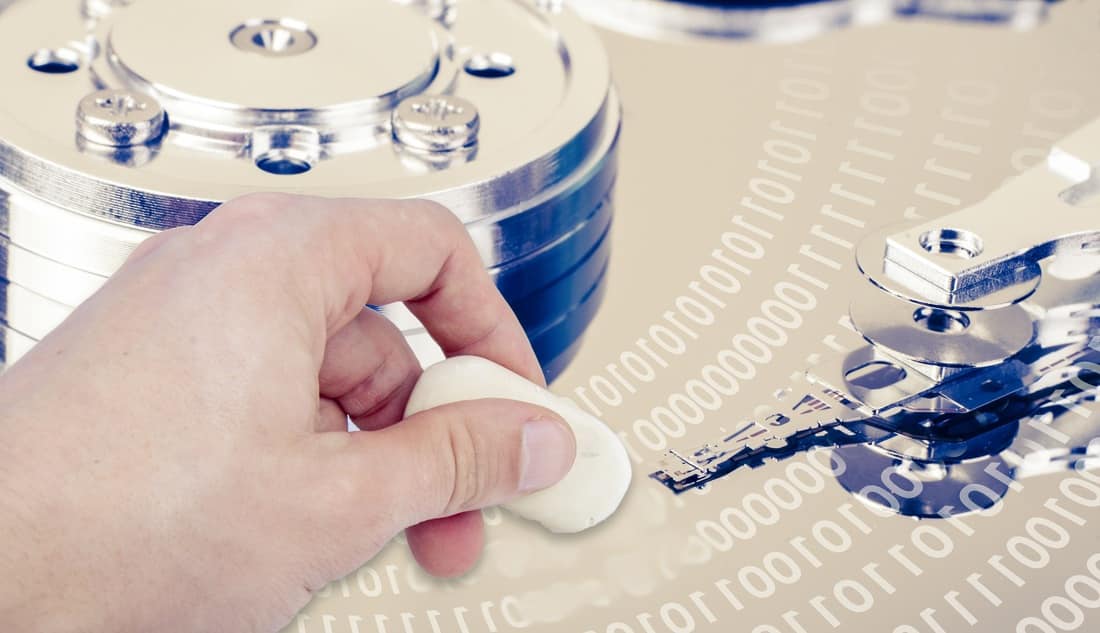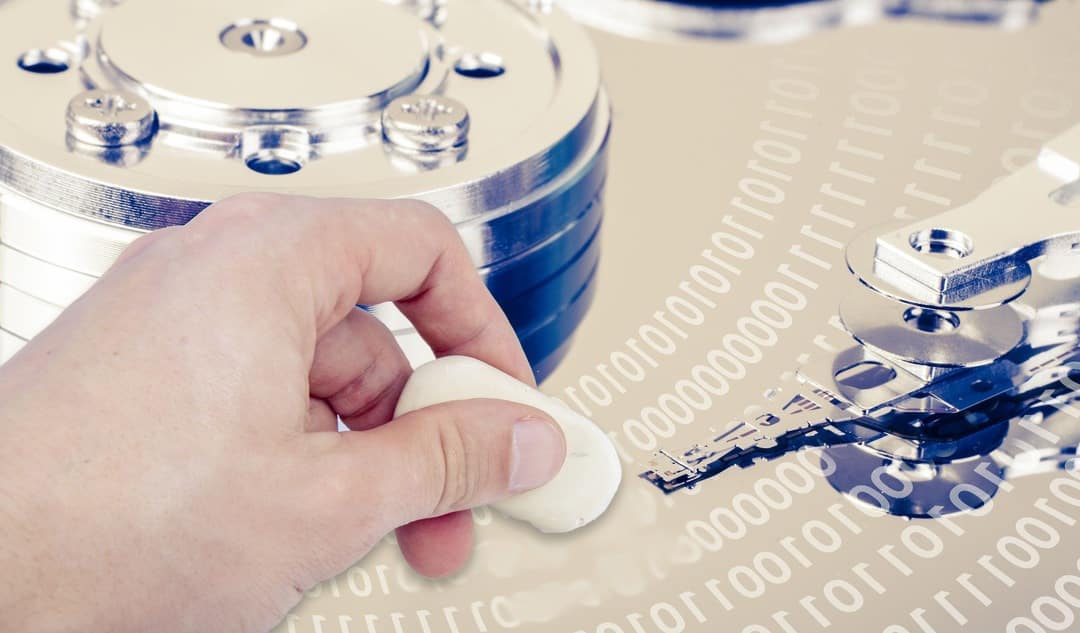This article will consider the claim made by some people that data is never really gone when it’s deleted from your computer. It will also consider how you CAN successfully delete data so it cannot be recovered.
Can Data Always be Recovered? Or is the data ever really gone?

You’ve probably at some point heard someone tell you that your data is never really gone, that it can always be recovered. And to be fair, these claims have been made by reputable sources at times. But is this an accurate statement, or just another conspiracy theory cooked up by the paranoid?
How the Theory of “Persistent Data” Began
The first factor that lends to this theory that data is never truly gone, comes from how computer operating systems read and write data to storage devices. When a file is created, downloaded, etc. your computer operating system writes in formation to two places. First, it writes the actual data of the file to a free spot on the hard drive platter (or NAND as in the case of flash memory). Second, it writes an entry in the file system, or what’s sometimes called a file table. The file system acts as a type of phone book as it were. It stores the name of the file, some basic information about it, as well as the location where the file can be found on the drive.
This system of storing data greatly speeds up the process of searching for and locating files stored on the drive. Just imagine if it had to scan the entire disk for hours to find a specific file every time you had to open it. Most operating systems also store a backup copy of the file system just in case the first copy gets corrupted. However when a file is deleted, operating systems generally only delete the reference to the file in the primary table, but don’t bother to delete the actual data, or even the reference to it in the backup file table. This is the principal that most data recovery software works on. Analyze the secondary table, and the data area, you may well find that the data is still there. Provided that another file hasn’t already taken it’s place.
The Gutmann Theory
A Second factor that has lead to this idea, is a man by the name of Peter Gutmann a computer scientist who claimed in a paper that overwritten data can be recovered using magnetic force microscopy (MFM). He claimed that even if data were overwritten with all zeros, a sensitive enough magnetic force microscope could read the subtle variations in the bits and determine former data. His paper recommended that a minimum of 35 overwrites must be performed to ensure data can never be recovered. Many high ranking technology, security, and even government agencies took him at his word without further research. Thus we have modern multi-pass standards such as the well known DoD (Department of Defense) standard for wiping data from hard drives.
The reality though is that Gutmann had done no actual research on how hard drives work, and his theory was based on a flawed concept of their function. Gutmann believed, as many still do, that hard drives write ones and zeros (or positive/negative charges) to the hard disk platters. The reality though is that hard drives haven’t worked that way since well before most people had ever heard of a computer.
Modern hard drives write data in a form that is more like a high frequency analog audio wave which is then translated to and from binary data using circuitry and software built into the drives printed circuit board. The system is actually very complex and takes into account drive specific calibration data, vibration, etc. In fact those who have tried to test his theoretical method found that a simple coin flip to determine ones and zeros was just as likely to result in the correct data. For more information about his theory and why it’s wrong you can see this article – Click Here
So the short answer to the question (Is data ever really gone?) Is a resounding YES, if the erase is done properly.
How to Make Sure Your Data is Really Gone and Can’t be Recovered
As previously mentioned, just deleting the file or even quick formatting the drive won’t do the trick. Though with continued use, the data will most likely be overwritten eventually. To be sure it’s gone and cant’ be recovered, you need to overwrite the actual data area where the file was stored.
There are a lot of free and paid programs out there that can automate the process for you. Some even have the nice feature of wiping all the unused space on the drive, thus deleting the data area of files you’ve deleted in the past. I prefer one called Eraser which is free and integrates nicely into Windows.
While most of these programs do have options for the multipass, random data, and other overwrite modes, a simple zerofill is more than adequate to do the job. Anything beyond that is really just a waste of time and electricity to satisfy your paranoia.













